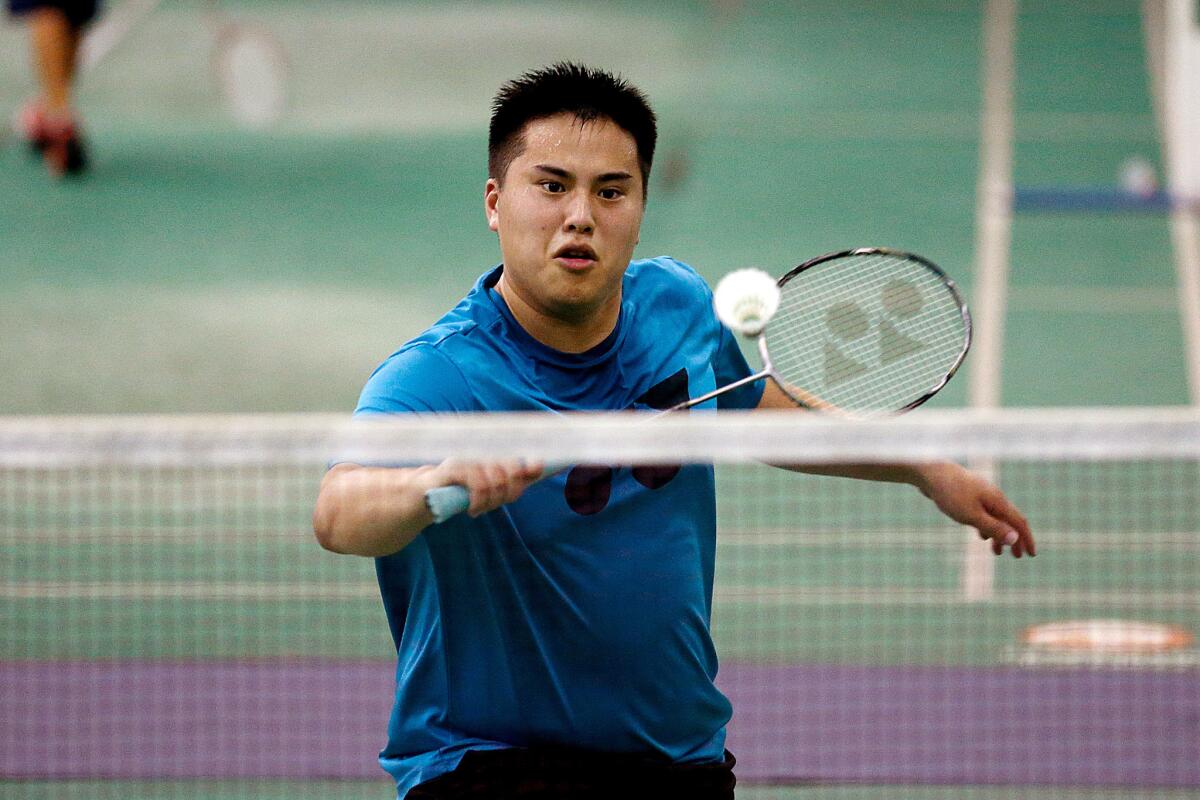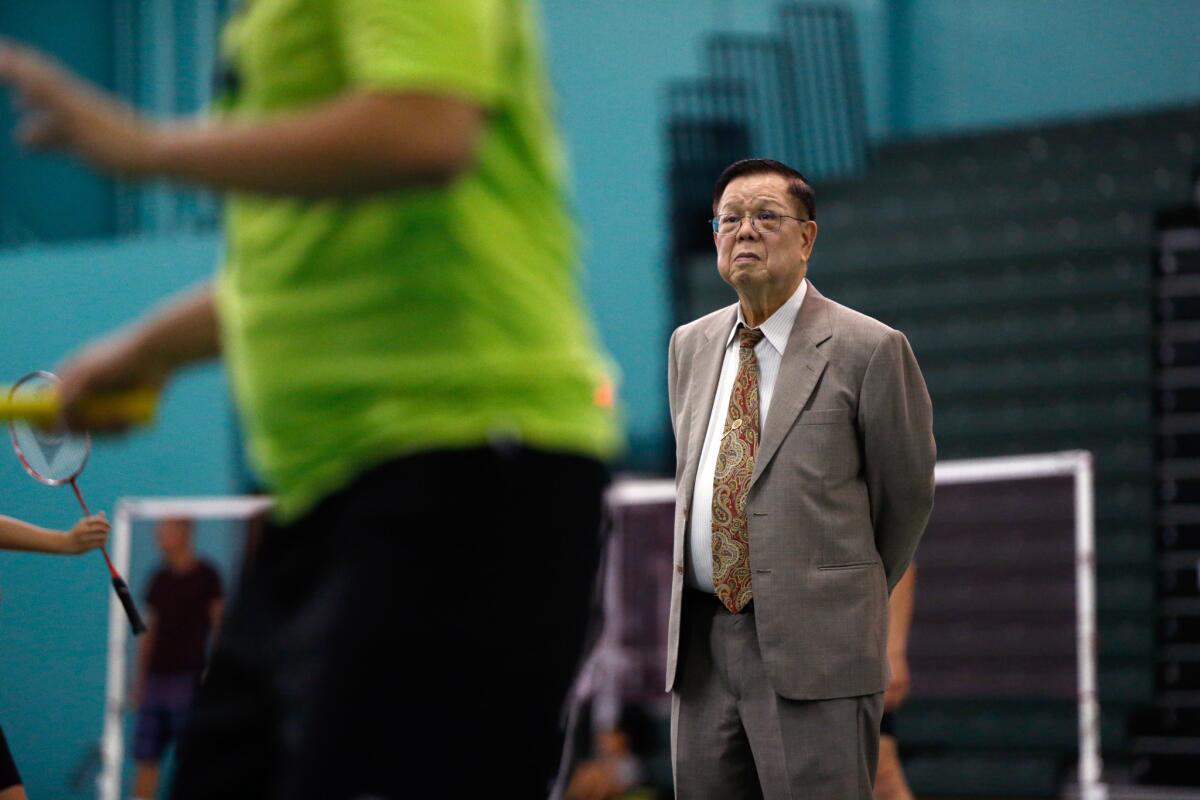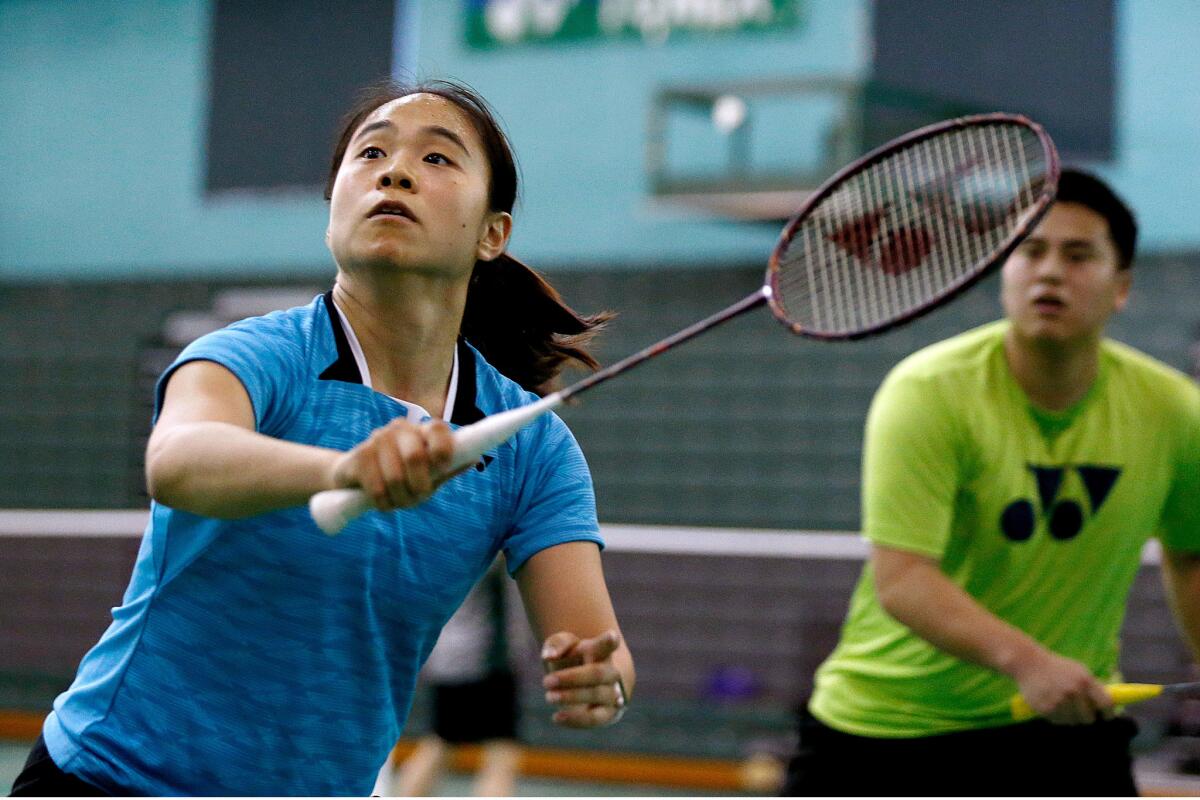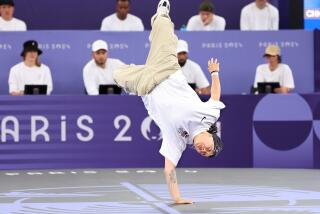Olympian carries family’s badminton dreams from Orange County to Rio

- Share via
Phillip Chew was just shy of 2 years old when his grandfather, Don, sat him on his lap, put a badminton racket in his hand and had him swing at a shuttlecock dangling from a fishing pole.
Twenty years later, Chew is doing much the same thing — minus the fishing pole — as part of his Olympic training. He’ll compete in men’s doubles and mixed doubles in Rio de Janeiro in the first Olympic Games where the U.S. has qualified in all five badminton events.
In many ways, Phillip’s road to Rio began not when he first held a racket, but when his grandfather immigrated to Southern California in 1972. Since then, Don Chew has spent millions striving to make the sport as big in the U.S. as in his native Thailand, where he left behind his own badminton career.
That dream is unattainable, at least in this decade. It has taken 20 years for Don and others to bring badminton to where it is today in the United States, little more than a high school physical education activity.
In 1996, Don built the $3 million Orange County Badminton Club from the ground up. It was the second club in California dedicated solely to badminton, and has 32-foot-high ceilings and 12 courts made of the same Danish hardwood used for some NBA floors.
Don built Phillip’s career from the ground up too. After starting all his grandchildren at a young age — Phillip played in the junior nationals as a 5-year-old Don has acted as de facto sponsor for him and the other two current Olympians, Jamie Subandhi and Sattawat Pongnairat, who also train at Orange County Badminton Club.
“I’m not rich, but I can afford it,” Don said. “I love it. I’ve helped a lot of kids here since we opened the club.”

Don’s wealth mainly comes from his commercial printing press business, housed on the same property as his club. His grandson estimated that in the last four years, Don spent $1-2 million on expenses for the three athletes as they competed in tournaments around the world.
American badminton players have to find their own ways to fund training and travel because the U.S. Olympic Committee won’t invest in a sport if they have no hope for a medal.
“We distribute limited resources where we think they will have the most impact and help put members of Team USA on the podium at the Games,” Alan Ashley, USOC chief of sport performance, said by email.
Phillip Chew conceded that for now, the U.S. cannot keep up with perennial badminton powerhouses, mostly Asian nations such as China and South Korea. In those countries, the sport is more popular than tennis or other sports considered mainstream in the U.S. The benefit is that elite sparring partners are plentiful and it’s possible for top players to make a living playing badminton.
Right now we’re big underdogs. We can compete with the best, but not for every point.
— Phillip Chew
Meanwhile, the U.S. doesn’t even have an official national training center.
“They’re right [that we aren’t medal contenders],” Phillip Chew said. “Right now we’re big underdogs. We can compete with the best, but not for every point. … Maybe five or six rallies we’ll do really well, and then we’ll give a bunch of free points away because we’re not used to competing at that speed and that level.”
“But we don’t give up,” his grandfather was quick to add.
The Chews insist that with time, badminton can expand beyond its label of a “backyard sport” in the United States. They point to its speed and fast pace as evidence of its potential allure — after all, a well-hit shuttlecock can travel more than 200 miles an hour.
In the not-so-wide world of American badminton, most of the recent progress can be traced back to Don Chew.
For example, all but one of the Americans who will play badminton in Rio trained at Orange County Badminton Club for at least part of their careers. The exception is 21-year-old Iris Wang, but even she has competed at some of the numerous tournaments at the facility; she also played as Phillip’s mixed doubles partner when they were juniors.
In the 2008 Olympics, all five USA Badminton team members came from OCBC. In 2012, two out of three did. Those two were Howard Bach and Tony Gunawan, a pair who won the U.S. its first world championship title in 2005 despite being seeded 13th in that tournament.

Two years after winning a gold medal in men’s doubles for Indonesia at the 2000 Olympics, Gunawan came to the U.S. looking to coach badminton. He found Don Chew, who instead asked him to try playing again. Gunawan agreed. He became a U.S. citizen in 2011, just in time to represent the country at the London Games, though he and Bach were sent home without a single win in their three group-play matches.
Gunawan has since left OCBC to open his own academy at the San Gabriel Valley Badminton Club, which now has two locations and has surpassed OCBC as the largest club in Southern California.
“At OCBC, there are so many coaches already and so many talented players,” Gunawan said. “Now more clubs have opened and more good coaches are scattering.
“Thank you OCBC for that. Thank you Don for that.”
Don has his eyes on an Olympic medal. It may be out of reach in 2016, but the Chews expressed optimism for 2020 or 2024, when Phillip’s younger brother Ryan is likely to join him as a doubles partner.
“To win the Olympic gold is not easy — even bronze — but this guy here, he has the ambition to win,” said a confident Don Chew, putting his hand, and his hopes for badminton glory, on Phillip’s shoulder.
More to Read
Go beyond the scoreboard
Get the latest on L.A.'s teams in the daily Sports Report newsletter.
You may occasionally receive promotional content from the Los Angeles Times.






